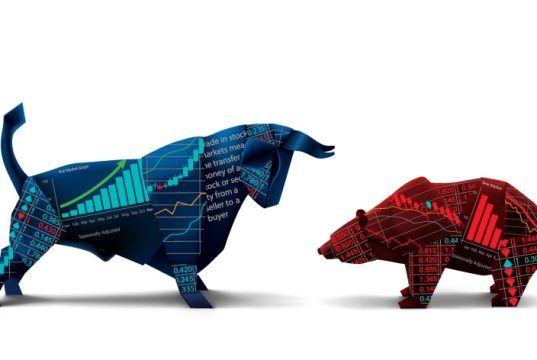Three Strategic Plays for Navigating Market Volatility
The recent market turbulence has created both challenges and opportunities for strategic investors. While many are retreating to the sidelines, seasoned market analysts are identifying select opportunities across different sectors that offer compelling value amid the volatility.
Our analysis highlights three stocks worth watching that combine attractive valuations with strong fundamentals—providing potential shelter and upside as markets digest the ongoing economic and geopolitical developments.
Amazon (AMZN): Beyond Consumer Dependency
While consumer confidence concerns loom over retailers, Amazon stands apart as “much more than just a consumer company.” This diversification provides a buffer against spending fluctuations that might impact pure-play retail operations.
The company’s aggressive investments in artificial intelligence position it for potentially stronger returns compared to other tech giants like Microsoft. These AI initiatives extend across Amazon’s vast ecosystem, from enhanced recommendation engines to logistics optimization and cloud computing advancements.
Despite tumbling more than 15% year-to-date, AMZN shares have shown resilience recently, surging 8% this week and outperforming the broader market. This price action suggests institutional investors recognize the disconnect between short-term pressure and long-term value.
The current valuation remains “very reasonable” relative to growth prospects, though not dramatically discounted. Given the price volatility, investors might consider a dollar-cost averaging approach—establishing positions incrementally “once or twice a month” throughout the year rather than attempting to time a perfect entry point.
Amazon’s management quality and franchise strength make it a compelling candidate for patient investors looking three years ahead. As one veteran market strategist noted, “Your average price at the end of the year is going to look really good three years from now.”
Pfizer (PFE): Defensive Value in Pharmaceuticals
The current market environment has veteran analysts anticipating potential further downside, driving interest toward defensive sectors like pharmaceuticals. Pfizer stands out within this space, combining remarkable value with strong product momentum.
Trading at a forward price-to-earnings ratio of just 7, PFE offers a compelling valuation entry point alongside its nearly 8% dividend yield. This combination of growth and income creates an unusual opportunity in a typically defensive sector.
The company’s key therapeutic franchises—particularly in oncology and cardiovascular medicine—continue performing well despite broader market concerns. These essential treatment areas typically maintain demand stability regardless of economic conditions.
While pharmaceutical stocks face some uncertainty following President Trump’s Tuesday announcement of “major” pharmaceutical tariffs coming “very shortly,” this sector-specific risk appears largely priced into Pfizer’s current valuation after its nearly 5% decline this week.
For investors seeking defensive positioning with significant income, Pfizer’s current price point merits serious consideration.
Chevron (CVX): Energy Value With Geopolitical Hedge
The energy sector has faced intense selling pressure, with Chevron shares sliding nearly 5% this week and over 18% in April alone. This sharp decline has pushed the stock into technically oversold territory, potentially offering a contrarian opportunity.
Current OPEC dynamics appear largely priced into the stock, while domestic production increases face profitability constraints regardless of political pressure. As one energy analyst observed, the “drill, baby, drill” scenario in the U.S. that some anticipate “just isn’t profitable for these companies.”
Geopolitical tensions add another dimension to the Chevron thesis. Ongoing Middle East conflicts—particularly concerns about potential escalation involving Iran and the Strait of Hormuz—could dramatically impact global energy markets. In such scenarios, established energy producers with global operations would likely benefit from supply disruptions.
From a valuation perspective, Chevron offers a compelling combination of metrics: a 5% dividend yield paired with a forward P/E ratio of approximately 13. This creates what one strategist described as an opportunity that “will pay you while you wait during all this market volatility.”
For investors seeking energy exposure with income support, the recent selloff may provide an attractive entry point for this integrated energy leader.















